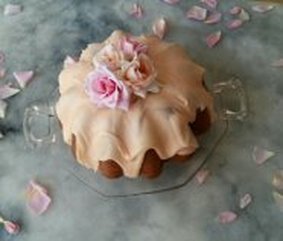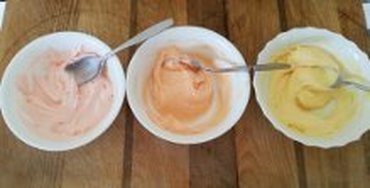Usually, I would go right to my standby recipe, Lemon Yogurt Cake. Alas, there’s not a stick of butter in the house and no yogurt either. And I want a really moist cake, a cake made with eggs and oil. Away from my beloved cache of cookbooks, I leaf through the parents’ cookbook shelf. I’m not finding anything that tickles my fancy. A quick internet search brings me to an epicurean.com recipe for a gluten-free lemon layer cake, originally published in Gourmet Magazine, 2005. I have no interest in the gluten-free aspect so I change it to cake flour. I reduce the oil from one cup to three-quarters of a cup. It works perfectly: lemony, moist, delicious. Of course the recipe works, of course it’s delicious: it was from Gourmet! Gourmet never let us down.
For over 60 years, the magazine brought faithful readers reliable, timely, and interesting recipes as well as presenting solid introductions to foods from around the world. The photography was beautiful, the journalism, lyrical. My parents archived every copy in the garage for forty years. The article on brownie variations is still my go-to recipe, having watched thousands of B & B guests swooning with pleasure after taking the first bite. My own recipe stash is stuffed with clipped-out Gourmet recipes: caviar deviled eggs, from-scratch onion dip, a rum sabayon to go with a pineapple cake. Heavenly! When Gourmet Magazine was no more, the suits at Condé Nast gave us Bon Appétit Magazine. That magazine has good photographs and there are some okay recipes but nothing grand has issued forth from Bon Appétit. If anything, the magazine has gotten less like its predecessor, further from the magic we’d known and loved for so long.
The bright spot is that most Gourmet recipes can be found at epicurean.com. When I’m googling recipes, I always check to see if a Gourmet recipe is hidden there. If so, I’ll usually add it to my list of must-try recipes. We thank you, Gourmet Magazine, for so many wonderful years!
I’ve written the recipe for a straightforward 9” layer cake but as I found out, this is a versatile batter that baked up well in many different-sized pans. The recipe made enough batter for one layer each of 3”, 5”, and 7” round cake pans plus one 3 cup mini bundt pan. I made the 5” & 7” layers into a mini tiered cake for the graduate, served the mini bundt cake at a family dinner, and split the cupcake with mom. The cake was a big hit with everyone. When choosing to bake in various sizes, remember that they will be properly baked at different times so test for doneness early and often. It’s always a good idea to keep notes on baking times, very helpful if repeating a recipe. I did not line any of the pans with parchment paper, just sprayed heavily with baking spray. I reserve that step for 9” layers and larger, to help the layers turn out cleanly from the pans. Smaller cakes are generally easier to get out of their pans.
Lemon Cake
Adapted from Gourmet Magazine, 2005
2 ½ cups cake flour
1 tablespoon baking powder
½ teaspoon salt
1 cup milk
¾ cup canola or vegetable oil
1 teaspoon vanilla
Zest of one lemon, finely grated (Microplaned)
2 cups sugar
4 eggs
Preheat oven to 350˚F
Special equipment: 2 9” round cake pans, sprayed with baking spray and lined with rounds of parchment paper, Microplane zester, mixer and mixer bowl, 2 cup glass measuring cup or small bowl, spatula, wooden pick, cooling rack, and pastry brush
Makes one 9: layer cake
- Whisk together the flour, baking powder, and salt. In another bowl or 2 cup glass measuring cup, combine milk, oil, vanilla, and lemon zest.
- In mixer bowl, beat together sugar and eggs, on medium speed, just until combined, about one minute. Reduce speed to low. Alternately add flour mixture and milk mixture, mixing just until combined, after each addition. Scrape down bowl as needed. Divide batter evenly between prepared pans.
- Bake until wooden pick or skewer inserted into center of cake comes out clean, about 35 to 40 minutes. Remove cakes to cooling rack. Cool cakes in pan for 10 minutes. Run a thin knife around edge of pan then invert cake onto rack. Repeat with second layer. Peel off parchment and cool completely.
I like to brush all lemon cakes with lemon syrup while they are still warm. This seals in the moisture and makes icing the cake easier as well as adding another layer of lemon flavor. Poke holes in cake, if desired, before brushing on lemon syrup.
Lemon Syrup
¼ cup fresh lemon juice
¼ cup water
½ cup sugar
In a microwave-safe bowl or 2 cup glass measuring cup, stir together all ingredients. Microwave one minute, stir. Continue cooking and stirring every minute or so until mixture is thick and syrupy, about 3 or 4 minutes total. Let cool at least five minutes before brushing on cake layers. Syrup can be made ahead and kept chilled, covered for a couple weeks. Use leftover syrup to sweeten lemonade or iced tea.
This frosting is based on the simple recipe from the back of the C & H powdered sugar box. The proportions, I believe, are half a stick of butter (1/4 cup,) a sprinkle of salt, the one pound box of powdered sugar, 2 or 3 tablespoons milk, and 1 teaspoon of vanilla. I haven’t looked at the actual recipe for many years. I just beat the softened butter until it is creamy, about 2 minutes, add some salt, and stir in powdered sugar until it gets too stiff to stir then add some milk. Keep adding powdered sugar and milk until achieving a spreadable consistency. This frosting is very forgiving. If you think the frosting is too thin, beat in more powdered sugar, too thick, dribble in some milk. I confess, I never measure the milk, just pour about 1/4- 1/3 cup into a little teacup then add milk as needed to get the consistency I’m looking for. I like to have a second box of powdered sugar on hand just in case. The frosting can be microwaved on low power for just a few seconds to get a pourable frosting. One batch of frosting usually covers a 9” layer cake, depending on how generous one likes to be with frosting. If you plan on doing any piped decorations, it is best to double the batch.





